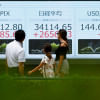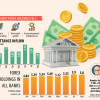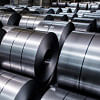Higher input, dollar costs take gloss off paint industry

Like other sectors, the paint industry in Bangladesh is in troubled waters as the US dollar crunch has made it difficult for manufacturers to import raw materials in line with their demand.
Paint manufacturers had posted solid growth in the five to six years on the back of consumption in both urban and rural areas and rising per capita income, before the economic slowdown caused by the coronavirus pandemic and the Russia-Ukraine war hurt sales, industry insiders say.
Now, owing to the US dollar shortage, the opening of letters of credit (LCs) has fallen, as the Bangladesh Bank has tightened rules to discourage the imports of non-essential and luxury items in order to save the foreign currency reserves from fast depletion.
At present, the annual demand for paint is nearly 200,000 tonnes, a rate that has remained unchanged for the last three years.
But paint makers say although the local market for decorative paints is not enormous at the moment, the future is bright as consumption is expected to go up in keeping with the recovery of the economy.
"The overall market is not impressive as people are not interested to spend money on non-essential items such as paints owing to the ongoing economic uncertainty caused by the inflationary pressure," said Khandker Abu Jafar Sadique, company secretary of Berger Paints Bangladesh Ltd.
The largest paint manufacturer in Bangladesh said its net income declined 16 per cent year-on-year in the October-December quarter as rising import costs for raw materials and the depreciation of the local currency erased sales gains.
The multinational company's net profit stood at Tk 68.30 crore in the third quarter of its financial year from Tk 81.24 crore. As such its earnings in the April-December period grew only 2.26 per cent although it recorded 17.5 per cent sales growth to Tk 1,890 crore.
Profits rose to Tk 204 crore in the nine months to December from Tk 200 crore a year ago.
Although sales were higher in April-December compared to a year ago, there is no way to make profits due to the higher price of raw materials, Sadique said.
"The sale volume matters for business, but it becomes a burden when the production cost is high."
Most industries in Bangladesh received a blow even before the Ukraine war began in February as pent-up demand and record freight costs sent prices higher in the global market for most commodities. The war-induced supply disruptions and energy crisis have just added fire to the fuel.
The taka has lost value by about 25 per cent against the US dollar in the past one year, making imports expensive.
Budhaditya Mukherjee, chief executive officer of Asian Paints (Bangladesh) Ltd, said "As per our information, the overall paint market in Bangladesh has not witnessed much of a build-up as it was seen in the past due to the ongoing economic turbulence the country is facing like the rest of the world."
The industry's overall volume production is running below capacity due to subdued demand. That, coupled with the sharp appreciation of the US dollar in the third quarter, increased the prices of raw materials and overheads percentage of sales, he said.
"Operating overheads also increased due to inflation in fuel prices and other factors. All these are putting pressure on the bottom-line."
Md Jahidul Hasan Khan, manager for purchase and logistics at Nippon Paint (Bangladesh) Private Limited, blamed the significant depreciation of the taka for the higher price of raw materials and thus, a sharp drop in sales.
The industry depends on imported raw materials.
"The hike in the cost of production has increased, thus eating into margins," he said.
He said the industry is in trouble since manufacturers can't open LCs to import raw materials.
"We need to open LCs worth $1.2 million per month but it came down to $0.2 million in December. So, we can't import necessary raw materials and produce products as per market demand," Khan noted.
Even when LCs were opened at Tk 86 per dollar, manufacturers had to settle the LCs at Tk 108 three to four months later, which raised the cost of production, he said.
Nippon was able to grab a 5 per cent market share in just seven years after establishing the factory in 2014. The company had a turnover of Tk 300 crore before the pandemic.
"But the ongoing situation is not favourable for the paint industry due to the economic uncertainty," Khan said.
A higher price of crude petroleum oil has been a blow for the local manufacturers as well, since crude and crude derivatives account for 40 per cent of the key ingredients they use.
The price of oil hit an all-time low of $30 a barrel in 2020 as demand plummeted owing to the pandemic. It surged to more than $120 amid concerns about a shortfall in global supplies following Russia's invasion of Ukraine. It is now hovering around $86 a barrel.
In 2017, the size of Bangladesh's decorative paint market was about Tk 3,500 crore.
Berger is the market leader with a 55 per cent market share. The other major companies are Asian Paints, Roxy Paints, Elite Paint, RAK, Pailac Paints, Moonstar Paints, and Ujala Paints.
Berger's Sadique believes that the situation in the paint market may improve slightly in the next two quarters as sales usually remain strong before the rainy season arrives.
"But the industry will not witness faster growth until the economy returns to normalcy entirely."

 For all latest news, follow The Daily Star's Google News channel.
For all latest news, follow The Daily Star's Google News channel. 








Comments